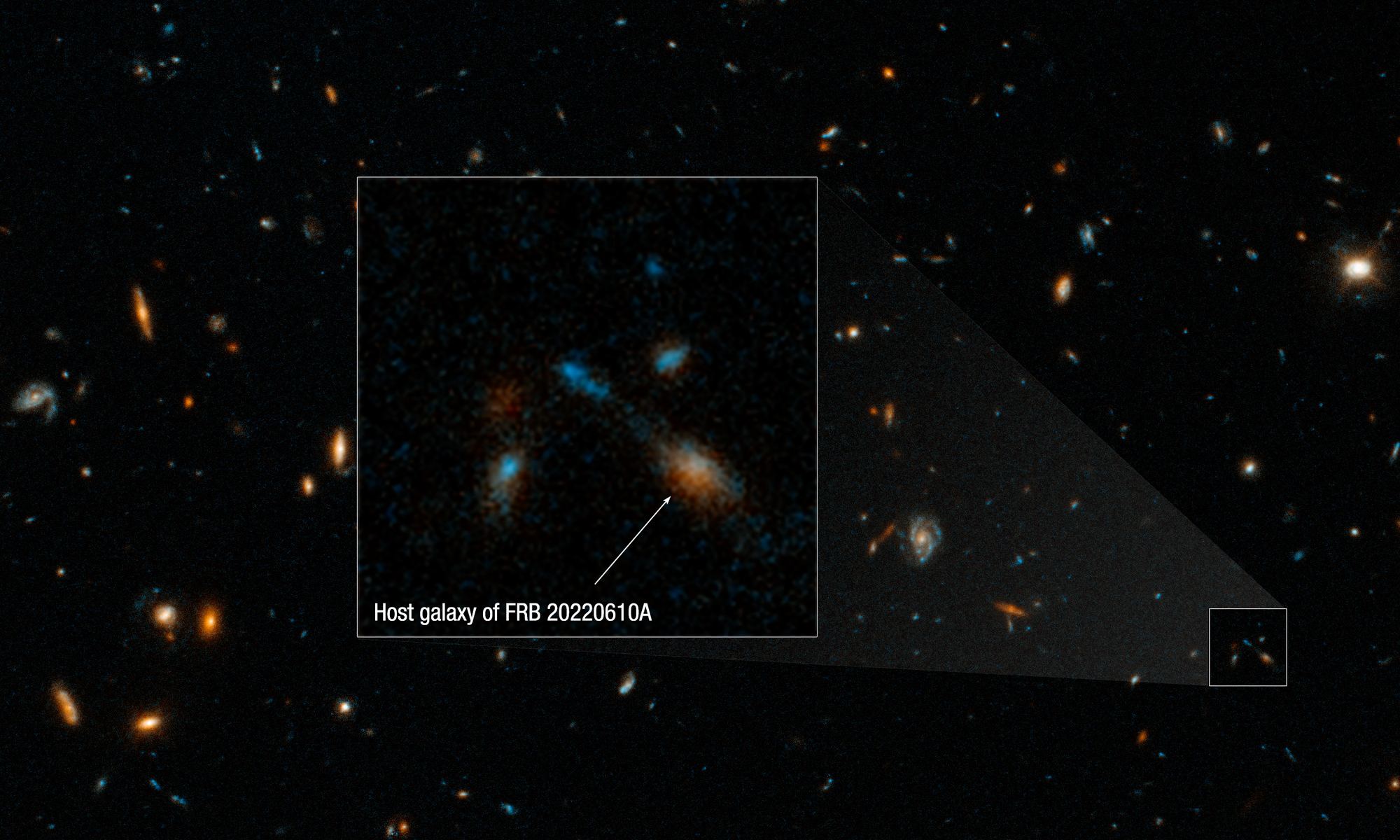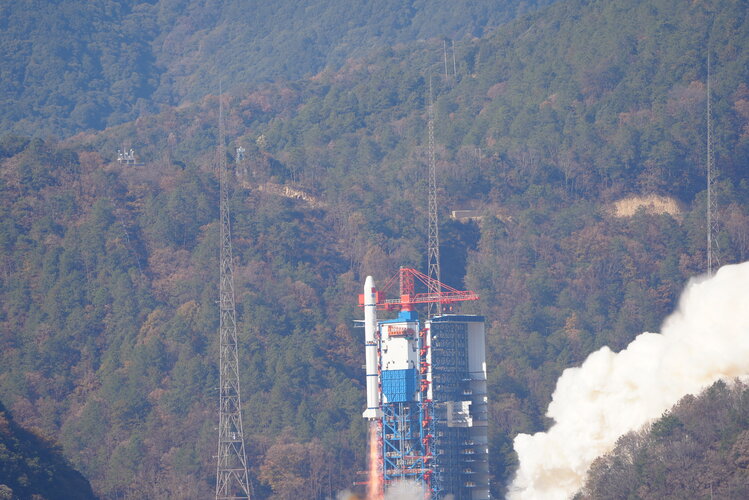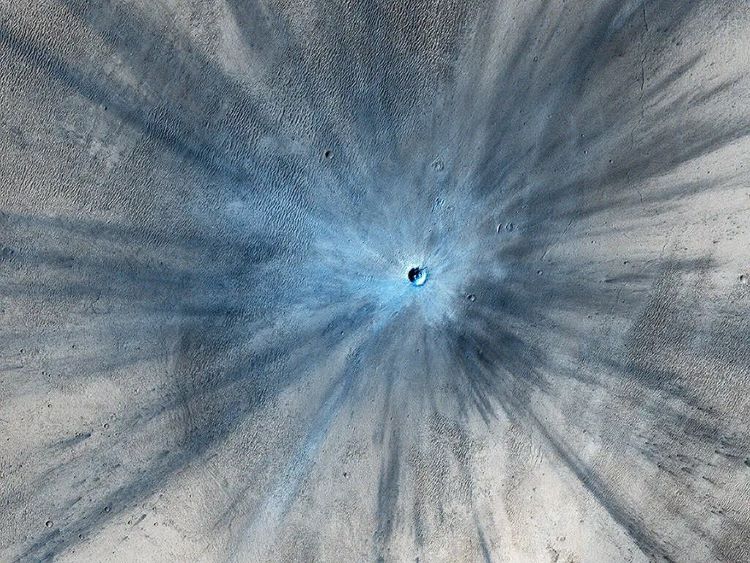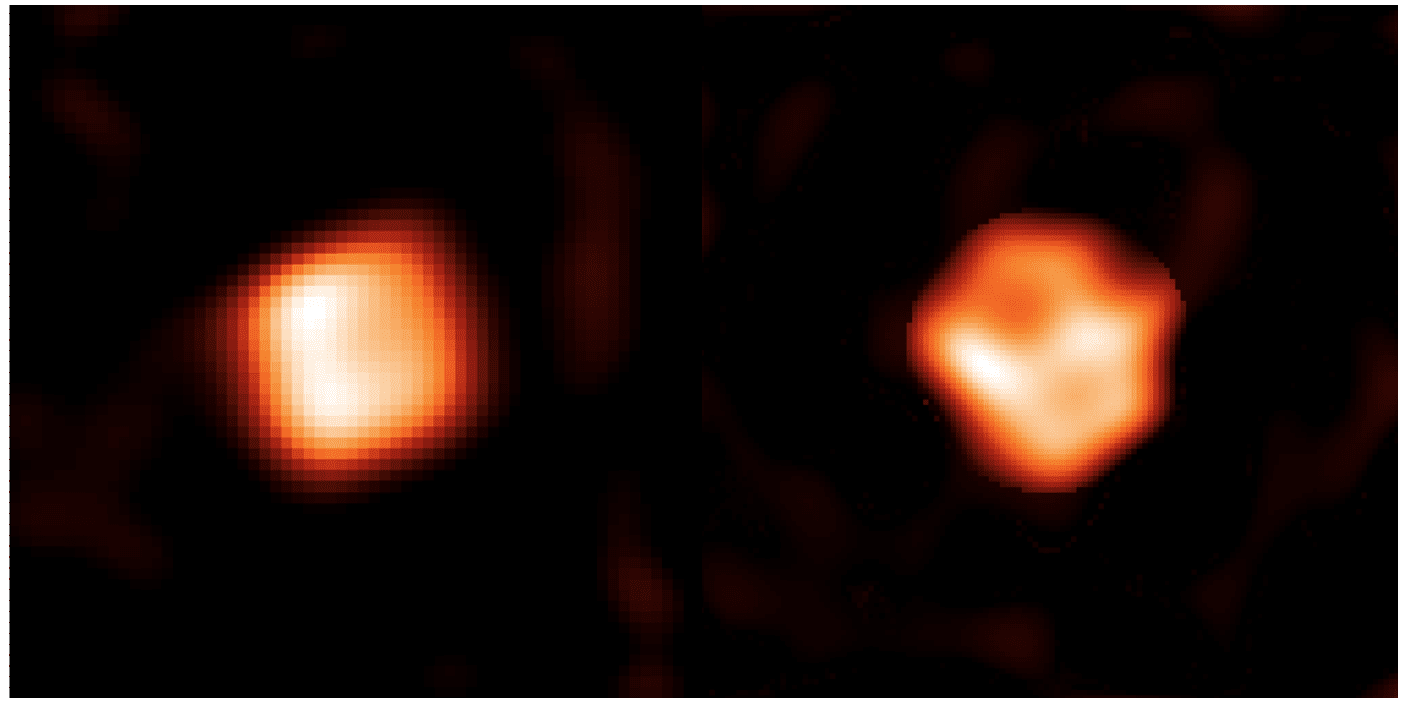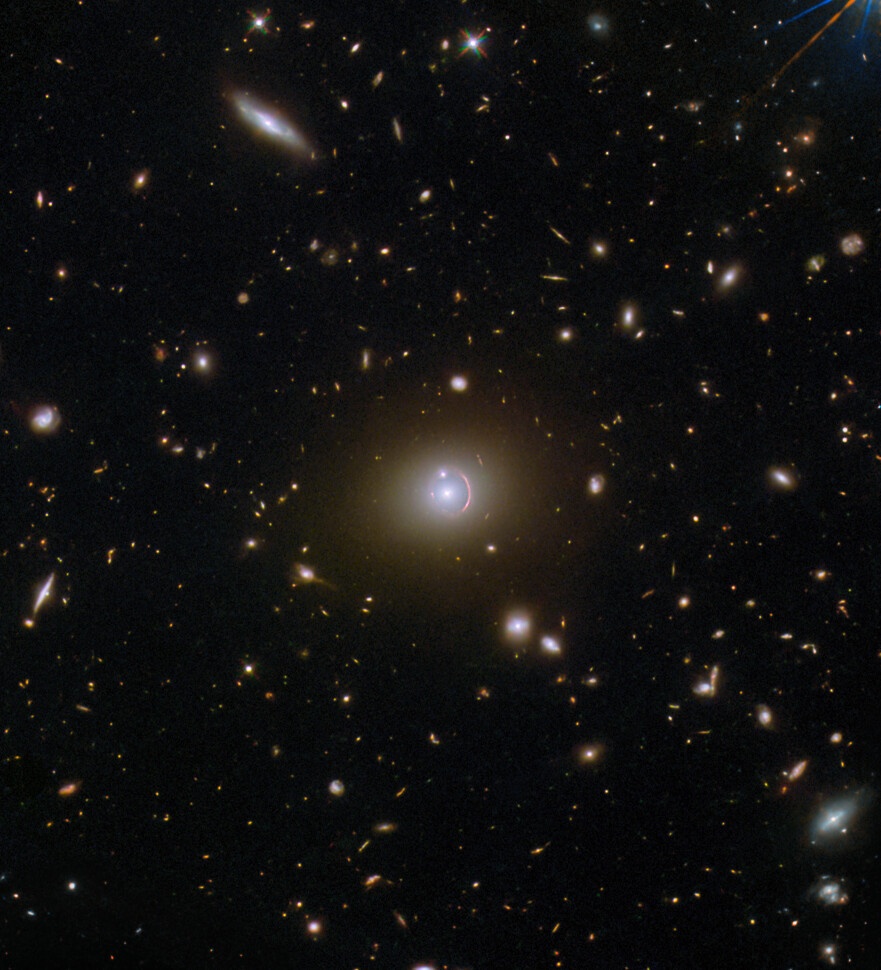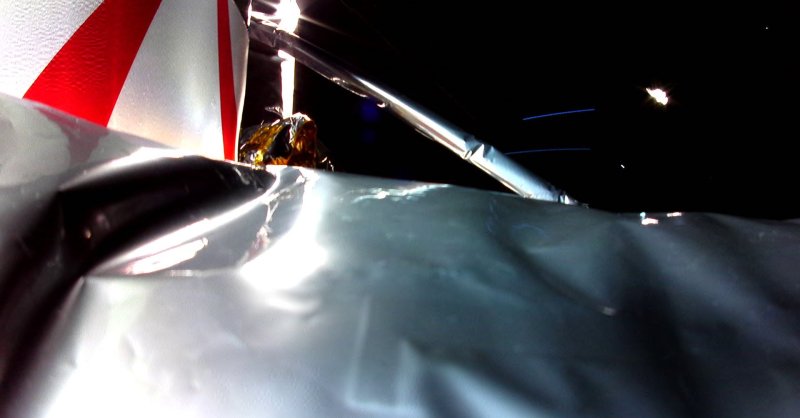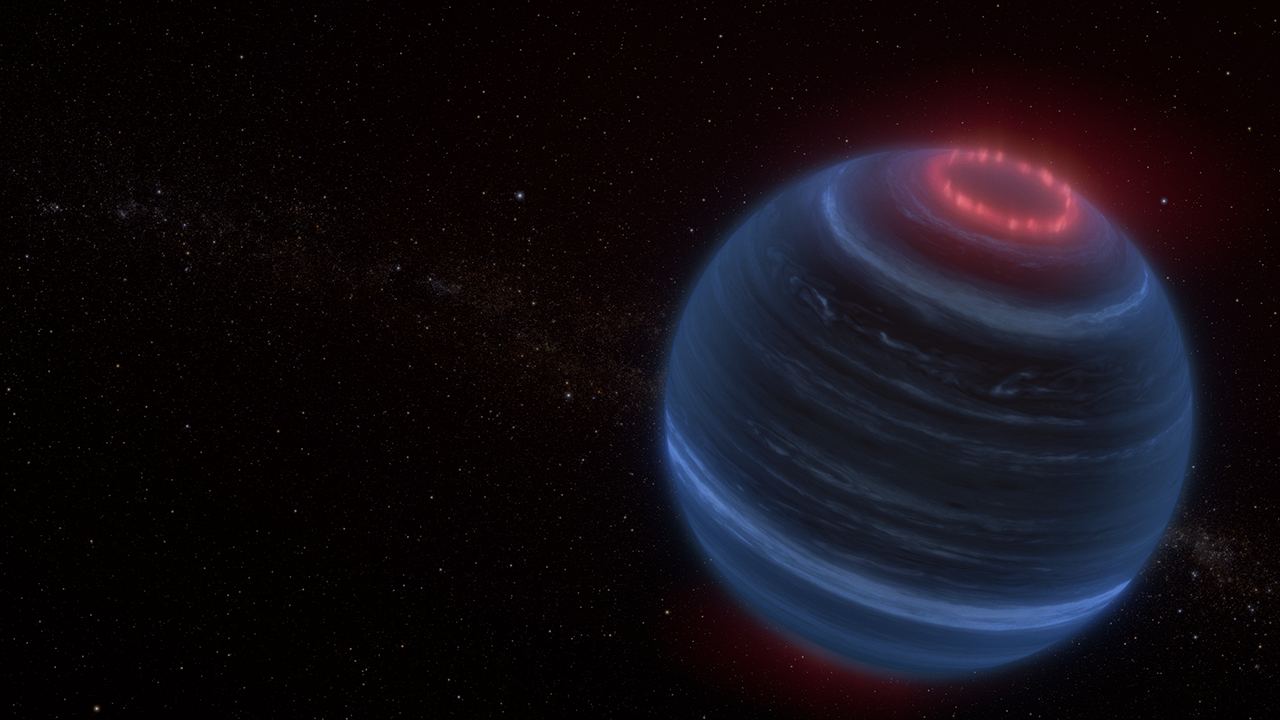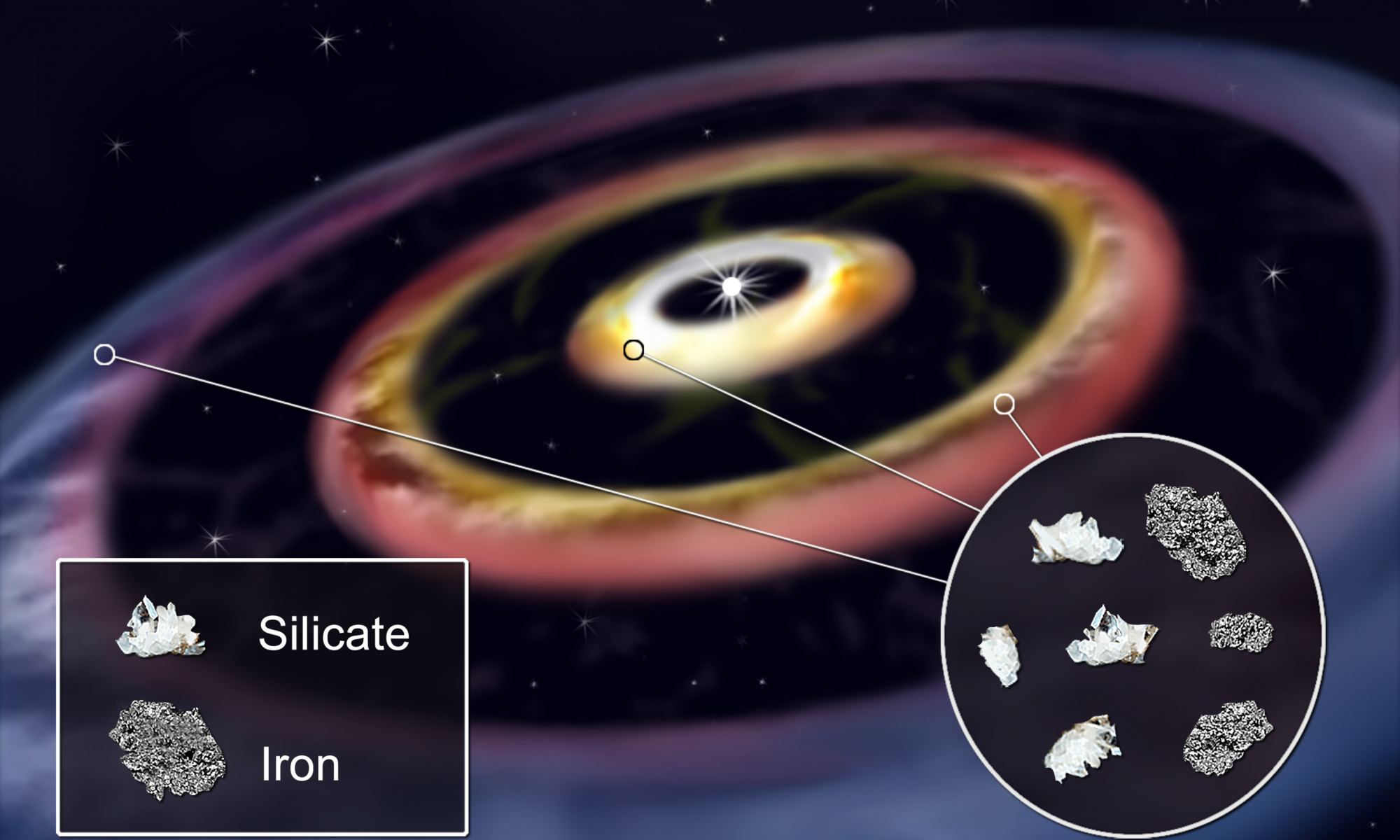Way back when the cosmos was only five billion years old, a powerful explosion happened in a group of young galaxies halfway across the Universe. It sent out a blast of radiation from one member of that distant galaxy group.
Continue reading “Hubble Shows That a Fast Radio Burst Came From a Giant Group of Galaxies”Hubble Shows That a Fast Radio Burst Came From a Giant Group of Galaxies
